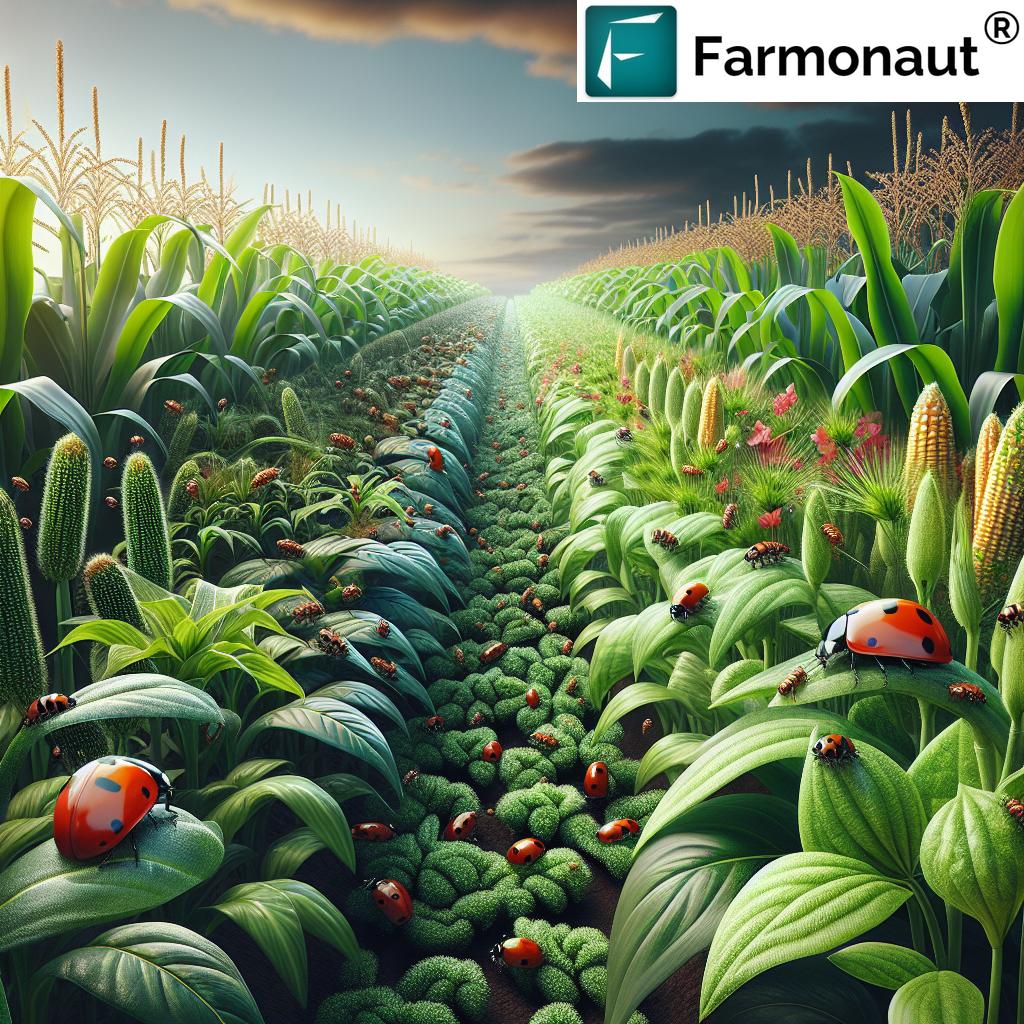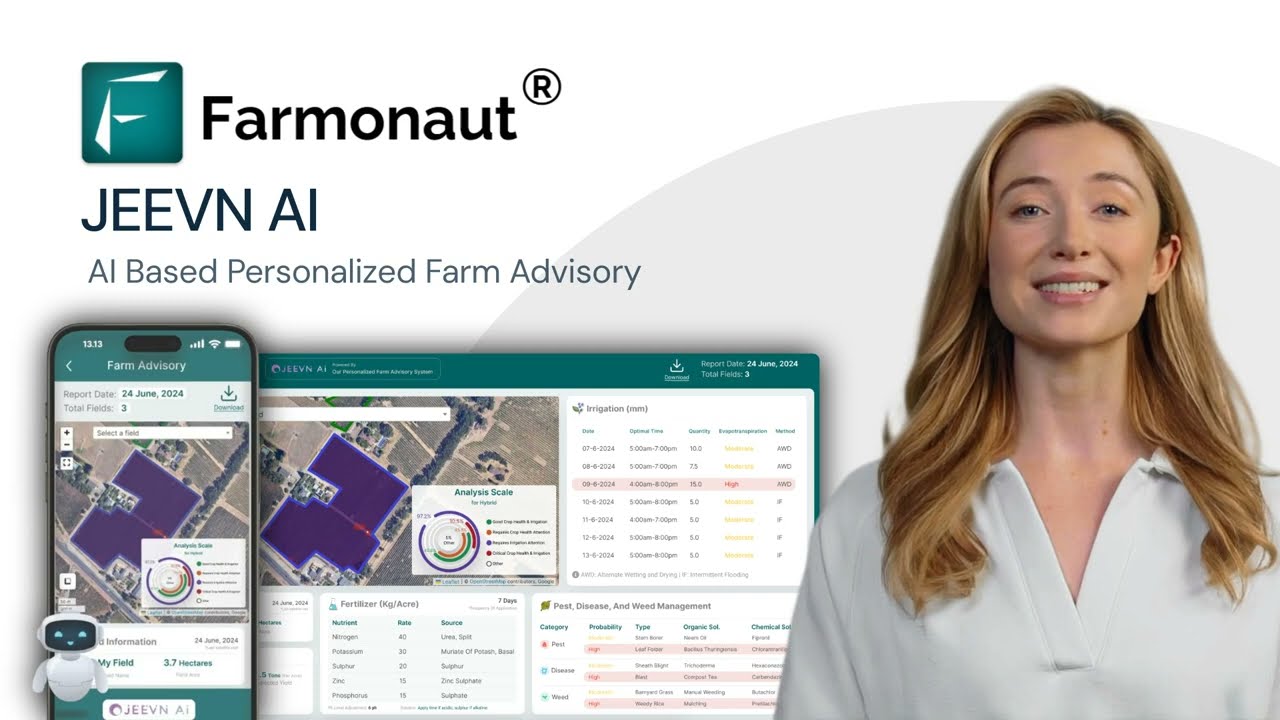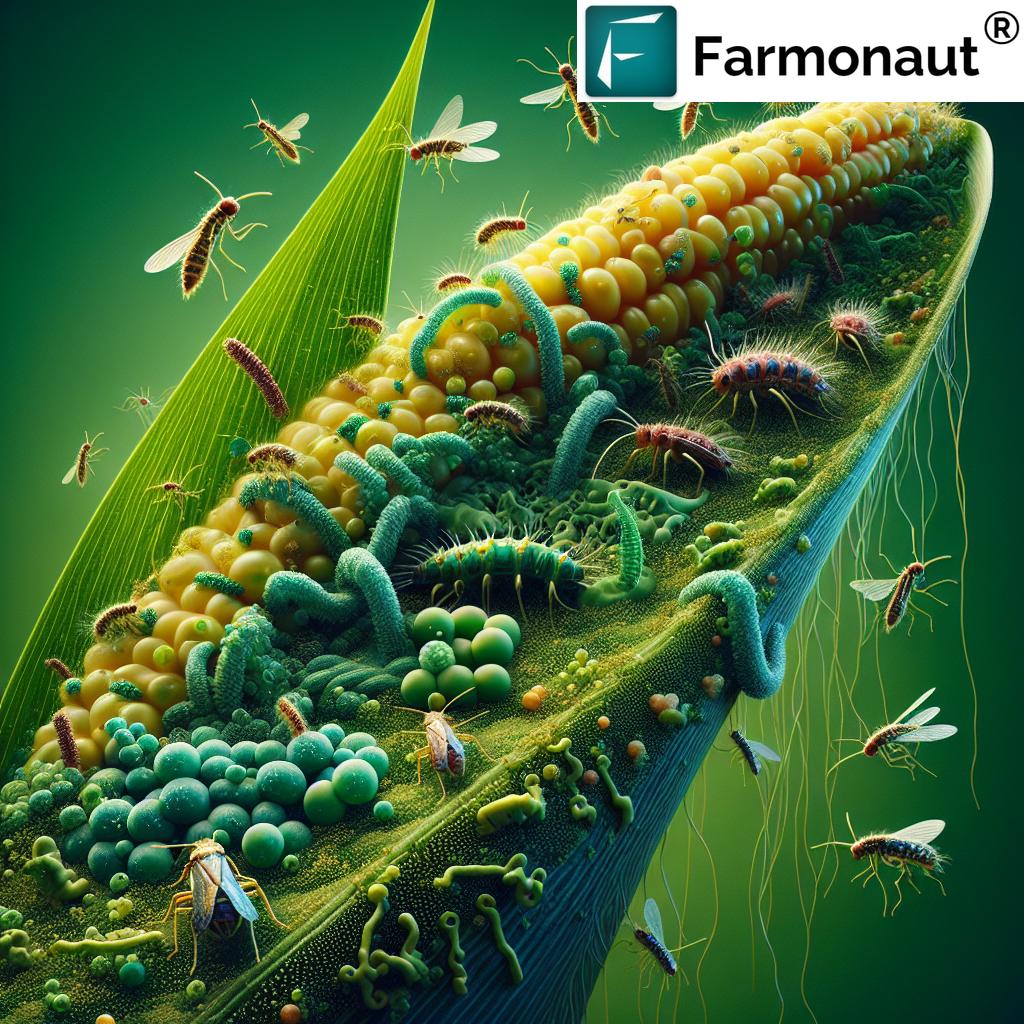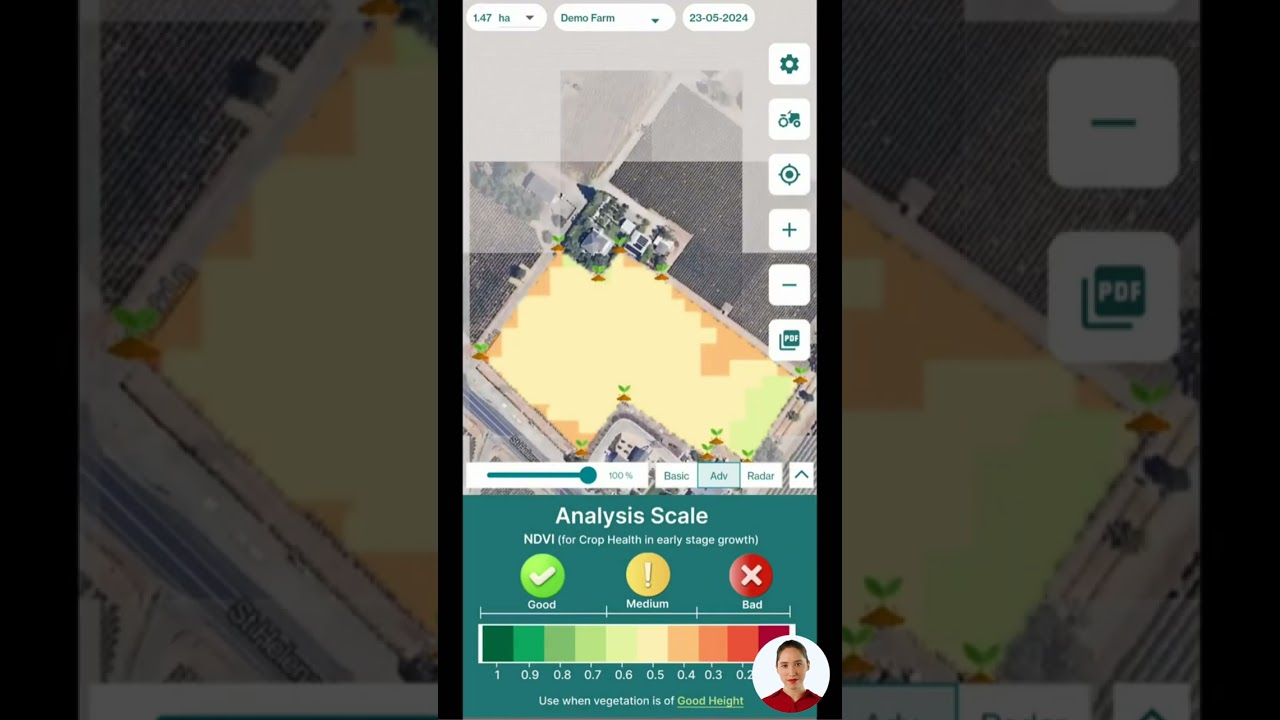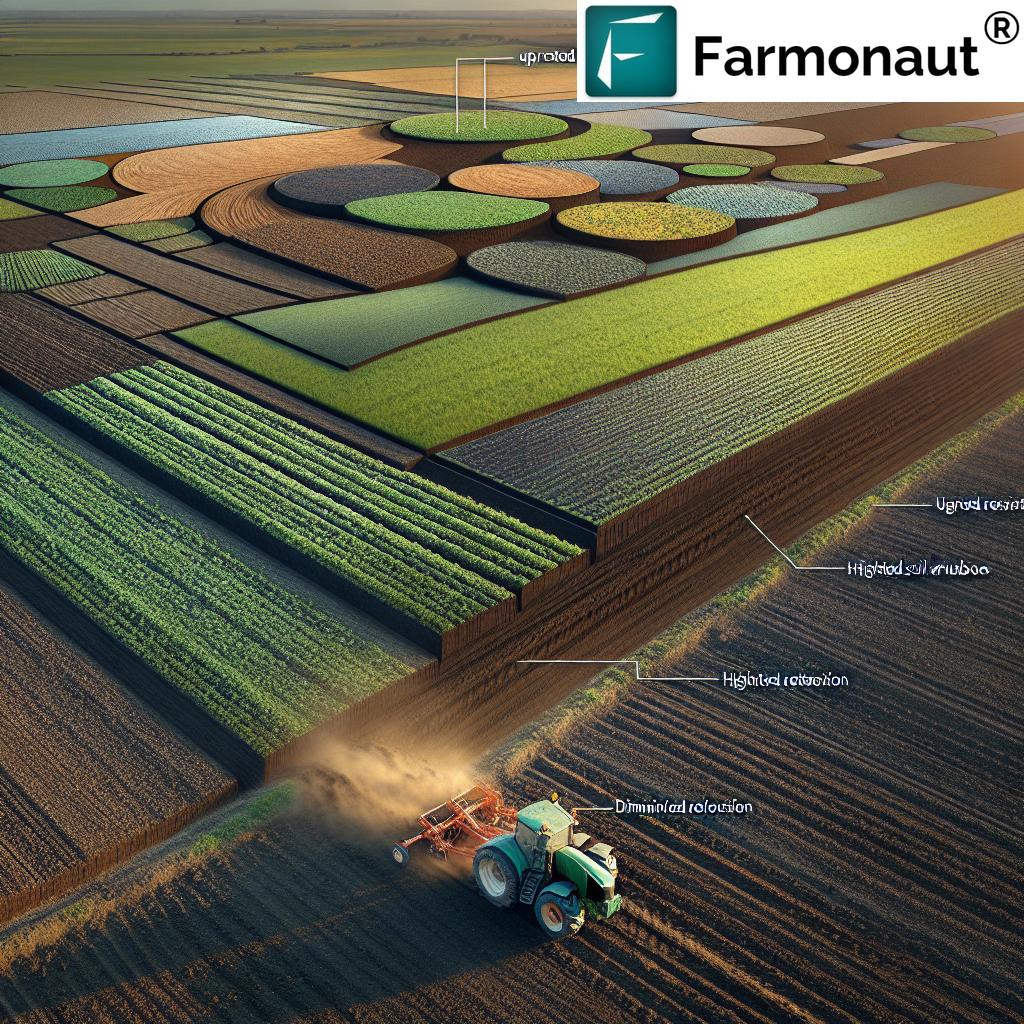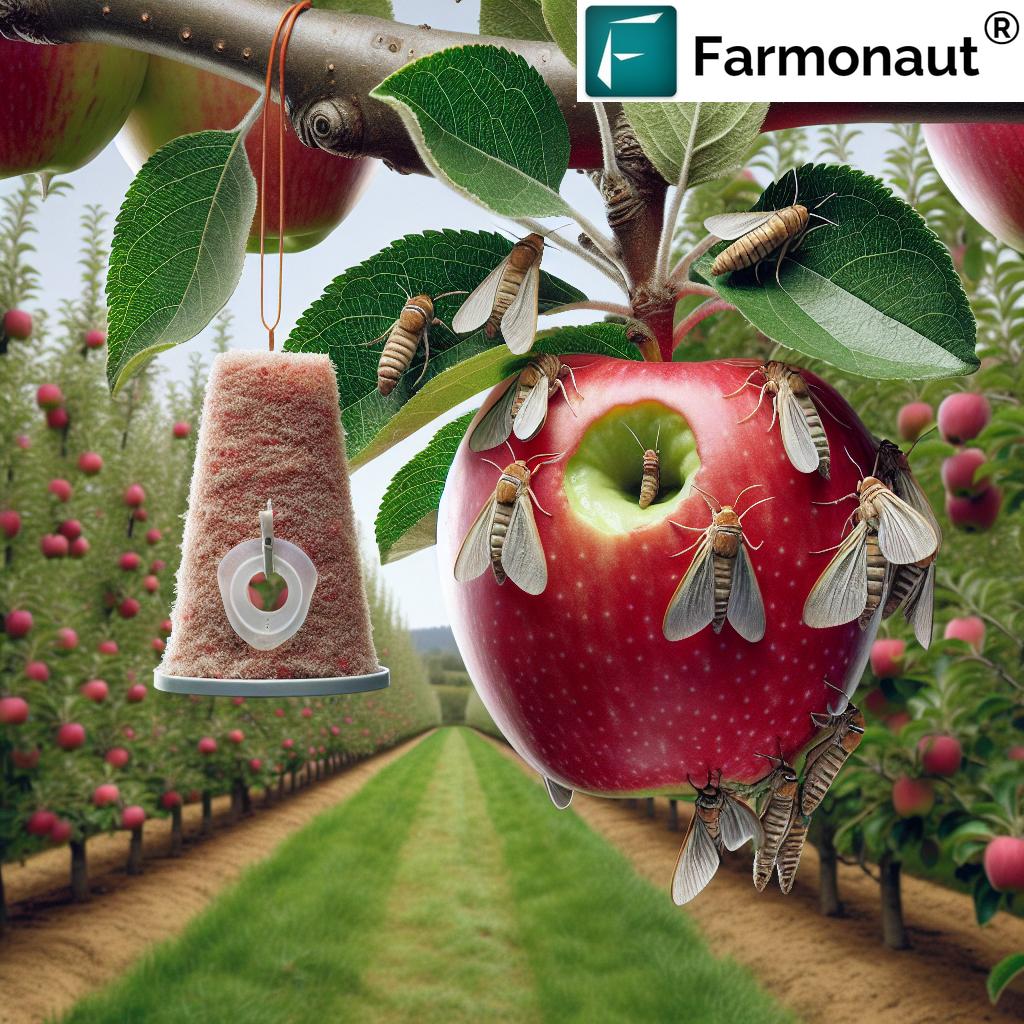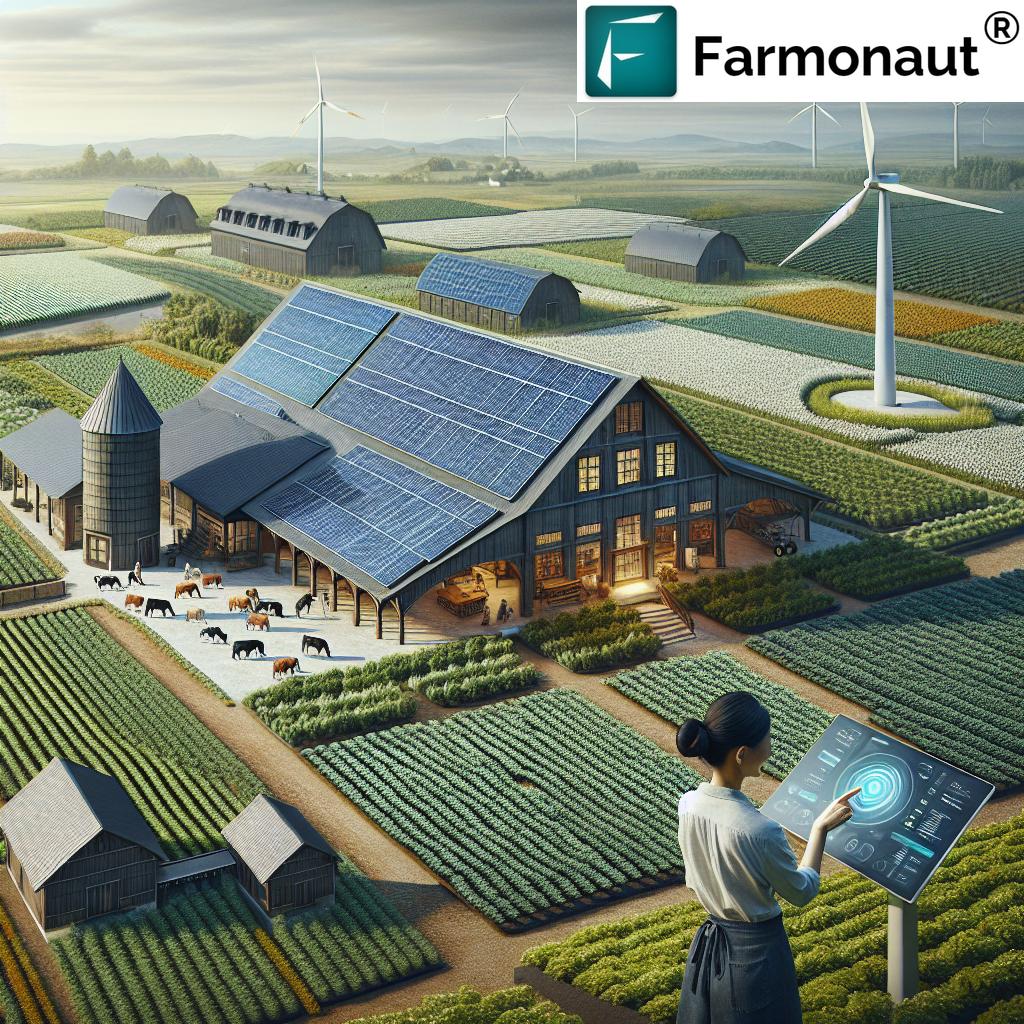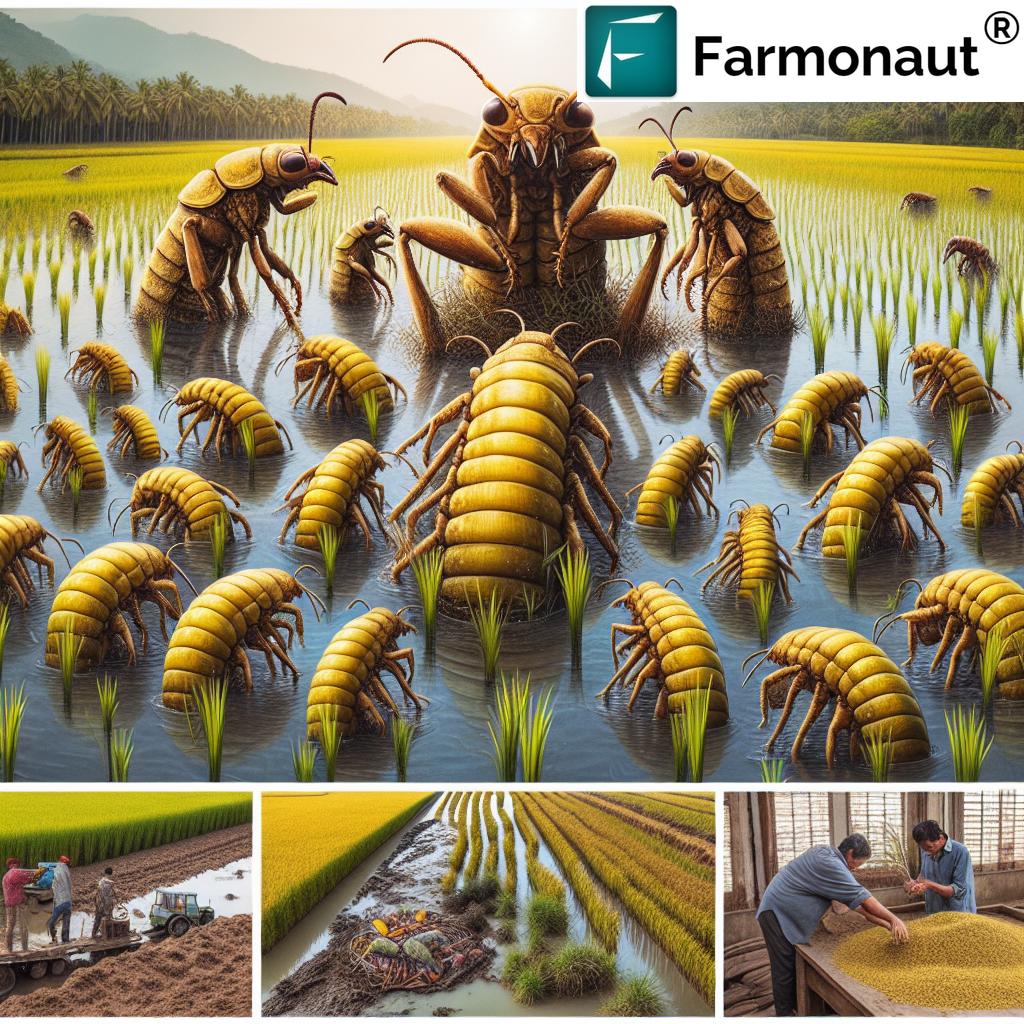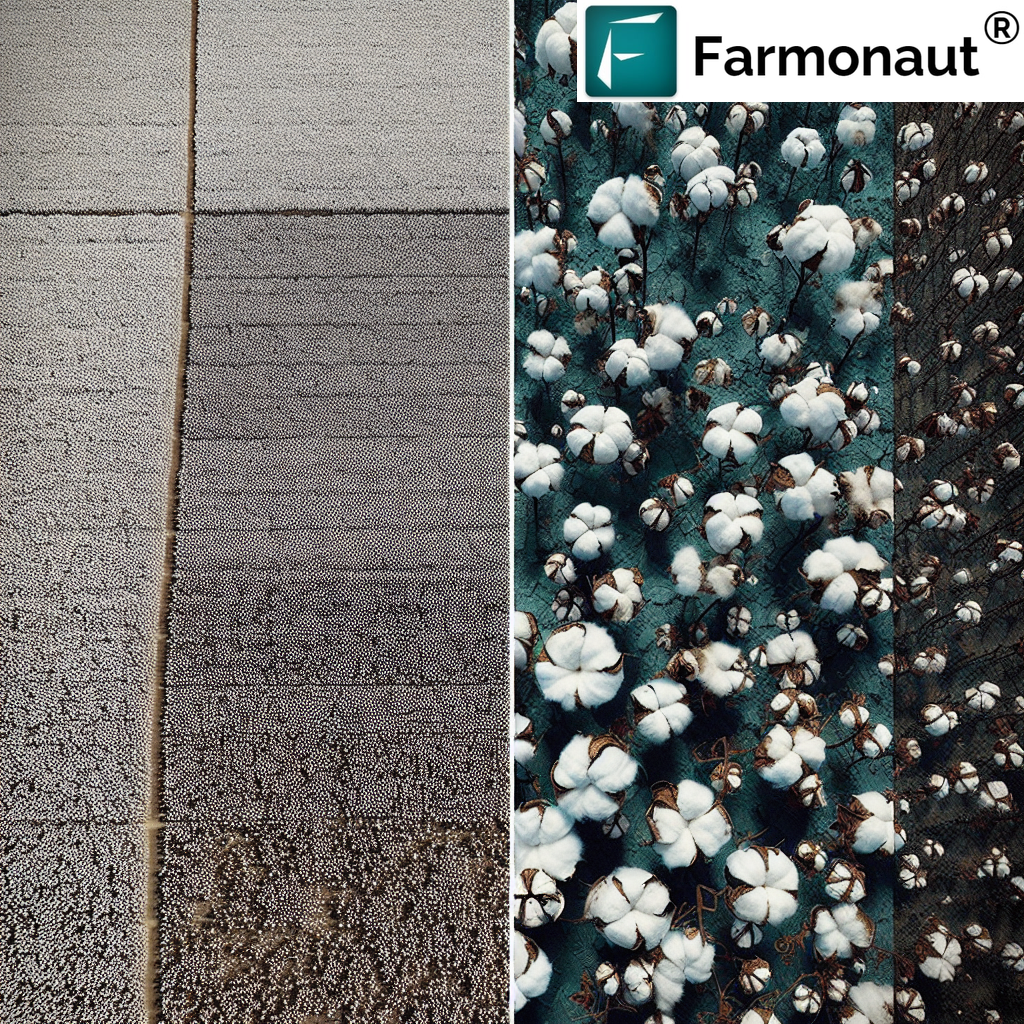Eliminate Insects: Top 7 Pest Control Tips for Crops
“Biological pest control can reduce pesticide use by up to 70%, promoting healthier crops and soil sustainability.”
- Why Pest Control in Agriculture Matters
- Top 7 Pest Control Strategies for Crops
- Comparative Summary Table: Sustainable Pest Control Methods
- Comprehensive Overview of Sustainable Crop Pest Management
- 1. Chemical Pest Control Methods (Entomopathogenic Agents)
- 2. Biological Pest Control
- 3. Cultural Control in Agriculture
- 4. Physical Barriers and Mechanical Methods
- 5. Use of Resistant Crop Varieties
- 6. Habitat Management: Attract Beneficial Organisms
- 7. Integrated Pest Management (IPM) & Push Pull Strategies
- Farmonaut: Precision Pest Management Technology
- FAQ on Pest Control in Sustainable Agriculture
- Conclusion: Moving Toward Sustainable Pest Management
Managing pest populations is crucial for agriculture, farming, and forestry to protect crops and ensure food security. Insects, while vital for pollination, decomposition, and maintaining ecological balance, can also threaten our harvests and livelihoods when certain species become harmful pests. Sustainable pest control strategies are essential for eco-friendly crop protection, minimizing environmental damage, and reducing reliance on chemical pesticides. In this comprehensive guide, we explore the top seven pest control tips for crops, focusing on sustainable, integrated approaches—from biological pest control to innovative push pull pest management techniques.
Why Pest Control in Agriculture Matters
Pest control is fundamental to efficient agricultural production. Harmful insect species can devastate crops, affecting yield, quality, and profitability. Conversely, beneficial insects play crucial roles in pollination, breakdown of organic matter, and overall ecological balance. Thus, while complete insect elimination is neither feasible nor desirable, strategic pest management allows us to mitigate damage caused by harmful pests while enhancing sustainable crop production.
- Pest management shields crops, livestock, and even forest resources.
- Pest control strategies protect against economic loss and ensure food security.
- Environmentally friendly pest control preserves biodiversity, reduces pesticide use, and supports ecological sustainability.
- Modern approaches such as integrated pest management (IPM) blend chemical, biological, and cultural controls, minimizing harm to beneficial organisms and reducing environmental impact.
Top 7 Pest Control Strategies for Crops
- Chemical Pest Control Methods (including entomopathogenic bacteria, fungi, and viruses)
- Biological Pest Control (using natural predators, parasites, and pathogens)
- Cultural Control in Agriculture (modifying farming practices such as crop rotation, intercropping, and sanitation)
- Physical Barriers and Mechanical Methods (nets, row covers, traps)
- Use of Resistant Plant Varieties (cultivating crops bred for pest resistance)
- Habitat Management (encouraging beneficial insects and natural enemies)
- Integrated Pest Management (IPM) and Push Pull Pest Management Approaches
Comparative Summary Table: Sustainable Pest Control Methods
The following table summarizes the top 7 sustainable pest control methods, helping you compare their effectiveness, environmental impact, costs, and best use cases for reliable, environmentally friendly pest control.
| Pest Control Method | How It Works | Estimated Effectiveness (% Pest Reduction) | Environmental Impact (Low/Medium/High) | Cost Estimate ($/acre) | Best Use Cases |
|---|---|---|---|---|---|
| Biological Pest Control | Employs natural predators, parasitoids, or pathogens like Bacillus thuringiensis to manage pest populations. | 60-85% | Low | 10-40 | Organic farms, greenhouse crops, pest-prone environments |
| Cultural Control in Agriculture | Adjusting farming practices—crop rotation, intercropping, sanitation—to disrupt pest cycles. | 30-55% | Low | 5-22 | Large fields, rotational systems, sustainable farms |
| Resistant Plant Varieties | Planting crop varieties bred for resistance to specific insect pests or diseases. | 45-75% | Low | 25-65 | High-pressure pest zones, commercial farming |
| Physical Barriers | Using nets, row covers, or traps to block or capture insect pests. | 35-70% | Low | 20-90 | Vegetable crops, nurseries, fruit production |
| Integrated Pest Management (IPM) | Combines multiple strategies—monitoring, thresholds, and targeted interventions. | 70-95% | Low-Medium | 35-95 | All crops, large-scale agriculture, sustainable farms |
| Organic Pesticides | Uses botanicals (neem, pyrethrin) and mineral substances with minimal non-target effects. | 40-65% | Low-Medium | 15-75 | Organic farms, vegetable gardens |
| Habitat Management | Planting flower strips or hedgerows to attract beneficial insects (predators, parasitoids). | 20-45% | Low | 8-30 | Field margins, orchards, agroforestry systems |
Note: Effectiveness and costs are estimated ranges and can vary based on crop, pest, and local conditions.
“Integrated pest management strategies can increase crop yields by 20% while minimizing environmental impact.”
Comprehensive Overview of Sustainable Crop Pest Management
1. Chemical Pest Control Methods: Entomopathogenic Agents
Chemical pest control methods continue to play a key role in reducing pest populations. However, the modern approach emphasizes selective use of biologically derived insecticides—also known as biopesticides—to enhance sustainability and target pests effectively.
Categories of Chemical Control Agents
- Entomopathogenic Bacteria:
- Bacillus thuringiensis (B.t.): A widely used bacterium that produces toxins lethal to the larvae of specific pest insect species, especially caterpillars. Sprayed on crops, it is harmless to humans, animals, and most beneficial insects.
- Lysinibacillus sphaericus and Burkholderia species: Applied to control a range of pest insects, especially in rice and maize cultivation.
- Entomopathogenic Fungi:
- Species like Beauveria, Metarhizium, and Cordyceps infect and kill a broad range of pest insects by penetrating their exoskeleton and proliferating within. These fungi are mass-produced and applied to target specific pests.
- Entomopathogenic Viruses:
- Baculoviruses: Highly specific; infect and kill larvae of certain pests without harming beneficial insects. Used commercially, but their production is labor-intensive due to the need to culture them in live hosts.
Benefits of Biopesticide-Based Pest Control Strategies:
- Specific targeting of pests, sparing beneficial organisms
- Minimal risk of environmental contamination
- Lower risk of pest resistance compared to synthetic pesticides
Limitations & Considerations: Chemical insecticides, while providing immediate relief from acute infestations, may precipitate pesticide resistance in pest populations, cause non-target effects, and result in environmental contamination if overused. Thus, chemical pest control methods are now often reserved for integrated pest management (IPM) approaches—being combined with cultural, biological, and physical controls for truly sustainable outcomes.
Want to ensure your pest management activities are truly sustainable? Try Farmonaut’s carbon footprint tracking tools for real-time monitoring and reduction of the environmental impact of your crop protection practices.
2. Biological Pest Control: Harnessing Nature’s Predators, Parasites & Pathogens
Biological pest control is at the heart of sustainable pest management. This approach leverages natural predators, parasitoids, and pathogens to manage pest populations in a manner that minimizes environmental disruption.
- Predators: Lady beetles and lacewings feed on aphids, while spiders prey on a broad range of insect pests. Conservation or introduction of these beneficial insects significantly reduces pest populations.
- Parasitoids: Parasitic wasps (Trichogramma, Aphidius) lay eggs within or on pest larvae (e.g., caterpillars, whiteflies), ultimately killing the host. Release of parasitoids can be highly effective for targeted control.
- Pathogens:
- Bacteria: Bacillus thuringiensis produces toxins, lethal to certain pest larvae only.
- Fungi: Beauveria and Metarhizium infect and kill insect pests on contact/ingestion.
- Viruses: Baculoviruses (e.g., NPV, GV) are highly specific to target pest species.
Benefits:
- Highly selective, reducing risk to non-target organisms
- Supports long-term ecological balance and enhances biodiversity
- Crucial for organic and environmentally friendly pest control
- Leads to a major reduction in pesticide use
3. Cultural Control in Agriculture
Cultural control encompasses the modification of farming practices to suppress pest populations. As a cornerstone of sustainable agriculture, it prevents harmful insect outbreaks while enhancing environmental sustainability.
- Crop Rotation: Alternating different crops each season disrupts pest life cycles and starves pest populations of their preferred hosts.
- Intercropping: Mixing crops within a field can confuse pest insects and attract beneficial species that prey on pests. For example, planting marigolds repels root-knot nematodes, while trap crops like nasturtium draw aphids away from more valuable crops.
- Sanitation: Removing crop residues and weeds that harbor insect pests, reducing overwintering sites and breeding grounds.
These methods are often low-cost and enhance the efficacy of other pest control strategies. Integrate with biological controls and IPM for optimal results.
Discover more about organic strategies and precision farming on the Farmonaut Organic Pest Control Guide.
4. Physical Barriers and Mechanical Methods
Catching, blocking, or physically removing pests from crops are among the oldest yet still vital techniques in pest management.
- Row covers and insect nets: The use of fine mesh or fabric barriers prevents insect pests from accessing crops, especially in vegetable and nursery production.
- Sticky traps and pheromone traps: Help in both monitoring pest populations and directly reducing pest numbers by attracting and catching flying insects such as whiteflies, thrips, and certain moths.
- Handpicking: Still widely used on small-scale farms, hand removal of visible pests keeps population levels manageable.
- Physical removal of infested plant parts: Pruning or disposing of infested sections prevents spread throughout the crop.
Advantages: Completely non-toxic, these methods have a very low environmental impact and can be especially useful when combined with other strategies in an integrated program.
5. Use of Resistant Crop Varieties
Planting pest-resistant varieties is a proactive and cost-effective way of managing insect populations, especially in areas prone to frequent pest outbreaks.
- How it works: Plant breeders select and propagate lines of maize, rice, cotton, or other crops that naturally possess resistance to major pests like stem borers, aphids, or beetles.
- Advantages:
- Little to no need for chemical pesticides for certain insect species
- Genetic resistance persists throughout the crop cycle
- Safe for beneficial organisms, supporting broader ecological balance
- Best suited for large-acreage farming in locations with established pest issues or limited access to biopesticides.
Note: Crop diversity remains important to prevent pests from adapting to resistant varieties over multiple seasons.
6. Habitat Management: Attract Beneficial Organisms
Habitat management involves designing the agricultural environment in ways that attract and sustain natural enemies of pests—such as predators and parasitoids. This promotes biological control and reduces the need for external pest management interventions.
- Planting flower strips/hedgerows: These provide nectar, shelter, and alternative prey for beneficial insects such as ladybirds, hoverflies, and predatory wasps.
- Maintaining field margins: Allowing non-crop vegetation to grow along edges and boundaries increases biodiversity and acts as a buffer zone.
- Integrating agroforestry: Trees and shrubs in or around fields provide overwintering sites and steady food sources for beneficial species.
- Ensuring water sources: Small ponds or ditches can attract amphibians and insectivorous birds, both natural pest controllers.
This method is environmentally friendly and ideally suited to organic, small-scale, and diversified farming systems.
Protect your supply chain reputation and ensure environmentally friendly pest control with Farmonaut’s blockchain-based traceability solution—ideal for demonstrating compliance and building consumer trust.
7. Integrated Pest Management (IPM) & Push Pull Pest Management
Integrated Pest Management (IPM) stands as a gold standard in sustainable pest management. It seeks to balance crop protection, productivity, and environmental health by combining multiple pest control strategies in a holistic, data-driven framework.
- Monitoring & Identification: Regular, precise inspection to assess pest populations and identify threats.
- Action Thresholds: Setting pest population levels at which intervention is justified, ensuring measures are taken only when necessary.
- Control Strategies: Selecting a combination of biological, chemical, cultural, and physical methods based on monitoring and thresholds.
- Ongoing Evaluation: Continual assessment and adjustment for optimal, cost-effective, and sustainable pest control.
Push Pull Pest Management: A powerful application of IPM strategies, push pull involves intercropping pest-repellent (“push”) plants with attractive trap (“pull”) crops. For example:
- In maize in sub-Saharan Africa: Desmodium is planted between rows to repel stem borers (push), with Brachiaria or Napier grass at the edges attracting and trapping the pests (pull).
The result: dramatically reduced pest damage, lower pesticide use, and higher yields with enhanced environmental sustainability.
Explore the benefits of full-farm digital oversight and IPM integration with Farmonaut’s Large Scale Farm Management Suite—enabling precision tracking of pest risks and eco-friendly interventions across all your fields.
Want to integrate satellite and pest management data into your own platform? Access the Farmonaut API and explore the developer documentation for seamless farm and resource intelligence.
Need secure, satellite-verified documentation of your pest management and field health for insurance and loans? Leverage Farmonaut’s crop loan and insurance services to cut fraud risks and get faster approvals.
For large agribusinesses and corporate growers, optimize pesticide application and logistics with Farmonaut’s fleet and resource management—reducing operational costs and supporting timely interventions.
For advice on pest control strategies in forestry, plantations, or agroforestry systems, get expert AI-powered guidance on the Farmonaut Crop, Plantation & Forest Advisory App.
FAQ on Pest Control in Sustainable Agriculture
-
Q: Can we eliminate all insects from our crops?
A: No, total elimination is not feasible or desirable. Many insect species are vital for pollination, soil health, and natural pest control. The goal of pest management is to reduce pest insect populations to levels that do not cause economic or ecological harm. -
Q: What is the most environmentally friendly pest control method?
A: Biological pest control and cultural control in agriculture (e.g., crop rotation, habitat management) are among the most eco-friendly strategies, as they minimize reliance on synthetic chemicals and support natural ecological processes. -
Q: How does integrated pest management (IPM) differ from traditional pest control?
A: IPM uses a holistic approach, combining monitoring, thresholds, and multiple methods for pest control. It balances crop protection with environmental and economic considerations, aiming for long-term sustainable results. -
Q: What are push pull pest management strategies?
A: Push pull pest management uses repellent “push” plants to drive pests away from crops and attractive “pull” plants to lure and trap them. This is a key technique in integrated pest management for controlling insect species such as stem borers in maize. -
Q: How can I tell if my pest control strategies are effective?
A: Effectiveness is measured by regular monitoring—using traps, field inspection, or digital platforms like those offered by Farmonaut for real-time crop health and pest pressure assessment. -
Q: What are biological pesticides?
A: These are pest control agents derived from living organisms—such as Bacillus thuringiensis bacteria, Beauveria fungi, or baculoviruses—that specifically target certain pests while remaining safe for most non-target organisms. -
Q: How does technology improve pest management?
A: Advanced technology (e.g., Farmonaut’s satellite-based crop monitoring) enables early pest detection, precise tracking, and targeted interventions, making pest management more efficient, sustainable, and cost-effective.
Farmonaut: Precision & Digital Pest Management Technology
We at Farmonaut are committed to empowering modern agriculture through satellite-based, AI-powered, and blockchain-enabled tools for efficient, sustainable pest control and crop management.
- Satellite Crop Health Monitoring: Our advanced platform continuously assesses crop fields using multispectral imagery, alerting users to pest hotspots and helping optimize interventions.
- JEEVN AI Advisory: Harnesses weather, satellite, and farm data for real-time, personalized pest management and resource allocation strategies—accessible from any device.
- Blockchain Traceability: Enables transparent, verifiable documentation of all pest management activities, fostering trust across the agricultural supply chain.
- Carbon Footprint Tracking: Supports compliance and environmental goals by quantifying and reducing the environmental impact of farm operations—including pesticide use.
- Resource Management: Our tools help reduce operational costs and enhance the effectiveness of field and fleet management, ensuring timely, data-driven pest control activities.
As an agricultural technology pioneer, our mission is to make precision agriculture accessible and sustainable for farmers, agribusinesses, and governments worldwide. Take your first step toward digitally optimized, eco-friendly pest management today!
Conclusion: Moving Toward Sustainable Pest Management
While eliminating insects completely is unachievable and often undesirable, sustainable crop protection relies on strategic, science-based pest control strategies. From biological pest control and cultural control in agriculture to integrated pest management and digital solutions such as Farmonaut’s platform, modern farming has powerful tools to reduce pest damage, protect yields, and ensure long-term soil and environmental health. Integrating these approaches protects not only crops and livestock but also the invaluable ecosystem services provided by beneficial insect species.
We at Farmonaut invite you to explore our innovative, accessible digital tools and embrace sustainable pest management—for greener, healthier, and more prosperous fields globally.


